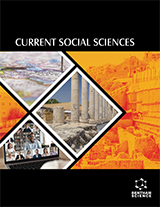Abstract
Interaction between people has become a lot simpler in modern times
because of the ever- widening interface between humans and technology, which itself
is an outcome of the “Digital Revolution”. In the contemporary scenario, access to
digital information has become a basic requirement for navigating through everyday
life, whether in education, security, business, or other sectors. However, even with such
a broad reach, there are certain sections of the society that remain untouched by the
advances in technology.
The COVID-19 pandemic and the consequent closure of educational institutions
around the world left us all stranded in our homes forcing us to rely solely on a virtual
environment for education, information access, and even for everyday interactions
(Barrot et al., 2021). In this context, the already persistent issue of “digital gender bias
and discrimination” re-emerged and got magnified, especially in poor and
underdeveloped regions. Numerous studies and reports have highlighted how women
were not treated equally and were not fully included in this new revolution, which
allowed inequalities to linger on, and in some circumstances, even worsen.
This chapter presents a study that explores how virtual learning environments and
education can enhance female entrepreneurship, leadership, and empowerment in
today's world. The advent of digitalization, particularly in the context of the COVID-19
epidemic, has had a significant impact on how information can be accessed, processed,
and transformed into knowledge-transforming these variables into critical components
of economic creation and political power. In a rapidly digitizing world, it is crucial to
develop multiple educational streams for varied talents, but it is even more important to
ensure that women emerge as significant stakeholders in this new digital setup.
Keeping this in mind, the chapter outlines the challenges that women have experienced
and continue to confront in the digital world, as well as the recommendations for
making the e-environment more egalitarian and progressive.













